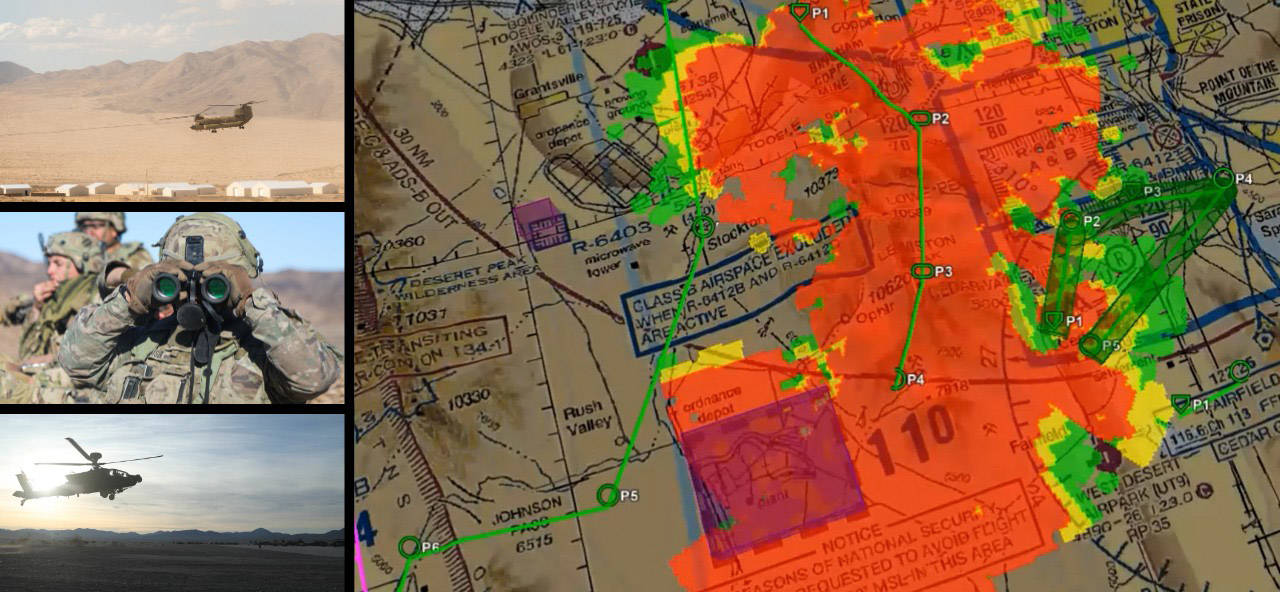Software designed to reduce pilot workload, improve situational awareness and sensor-to-shooter timelines, and reduce fratricide
FAIRFAX, Va. – The U.S. Army recently evaluated the Integrated Mission Planning and Airspace Control Tools (IMPACT) from General Dynamics Mission Systems at the National Training Center at Ft. Irwin and Camp Pendleton, Calif. as part of Project Convergence-Capstone 4, which is an annual Joint and Coalition large-scale experiment where the military tests its cutting-edge technologies under field-like conditions. Elements of the III Corps and XVIII Airborne Corps employed IMPACT for integrated mission planning and airspace control.
The focus of the evaluation was the collection of feedback from hands-on soldier usage of the IMPACT software at the flight company level for mission planning. Soldiers successfully used IMPACT, along with its ATAK plugin for the PEO-Soldier Air Warrior Tablet, to plan and evaluate a rotary wing mission, load that mission data onto a data transfer device, and use the device to load the mission onto a UH-60M helicopter.
“This pilot effort was the result of years of teamwork between the Army and its industry partners,” said Rachel Oberc, General Dynamics Mission Systems vice president for RF Systems. “To see the payoff of this trailblazing technology tested under real-world scenarios is extraordinary.”
The team also gathered critical feedback on the software and plan to use it for improving the software prior to its scheduled fielding date in two years. Soldiers also used IMPACT in several PEO Aviation experiments to provide command post data to the aircraft in flight, enabling emergent airspace usage (Artillery, EW, and UAS re-tasking) to be pushed to the aircraft, thus enabling dynamic replanning of the mission route.
“IMPACT is a key enabling tool to facilitate Joint All Domain Command and Control for Army aviation in Multi Domain Operations,” said Col. Burr H. Miller, Product Manager, Aviation Mission Systems and Architecture in PEO Aviation. “It provides capabilities for both the command post and mobile/handheld computing environments and converges the current mission planning capabilities of AMPS with the airspace control capabilities of TAIS into one role-based solution.”
Additionally, IMPACT was used to manage the airspace control picture for the event, disseminating such information digitally to the command post (including CPCE, AFATDS, and DARPA’s experimental ASTARTE software), and coordinating all airspace control requests for the Army and coalition partners from France and the United Kingdom. IMPACT was used to inform ASTARTE’s microservices to accelerate weapon/target pairing by predictive analysis of airspace and aircraft in flight. IMPACT also demonstrated a prototype integration of ASTARTE microservices into a standalone capability enhancement for aviation commander mission planning.
By utilizing a browser-based, fully 3-D web application, IMPACT ensured that all participants on the network could access and use the airspace control and mission planning functions. IMPACT’s role-based access ensured that individuals could login from any computer using their credentials and access their mission functions, maintaining established user preferences like bookmarks, units of measurement, and display states of layers. IMPACT’s focus on services and data made sure that external systems could leverage the detailed information maintained by its operators.
“As we continue to add and mature IMPACT capabilities, the result will be an integrated enterprise solution for both the enduring and future Army aviation fleets,” said Miller. “We are excited with what IMPACT is bringing to the fight and judging by the great feedback and acceptance from the Soldier-operators, so are they.”





